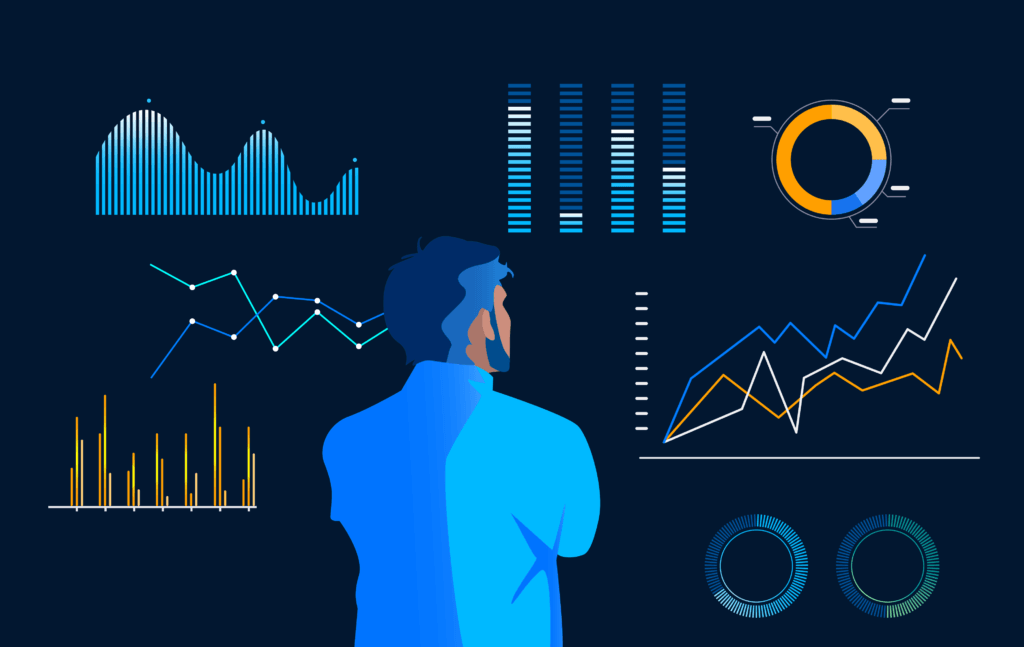Enterprise search is a problem-solving tool. For companies contending with large quantities of data, documents, and other assets to find on intranets, it’s one of the most effective tools out there. Enterprise search tools have skyrocketed productivity and made it easier to coordinate efforts company-wide. By using effective enterprise search software, users can quickly hunt down relevant information, improving their decision-making and problem-solving capabilities based on data.
Yet, enterprise search developers and the programs themselves face many challenges. Some challenges stem from the technology itself. Others emerge from the outside world. Either way, obstacles that reduce functionality within the search experience can restrain productivity.
The following are a handful of the biggest challenges faced by enterprise search tools.
Unstructured data.
Unstructured data does not have an already defined data model, or at least isn’t organized in a pre-defined manner. Much of the data people work with daily through analytic programs is structured and organized. This makes it easy to work with. Yet somewhere between 80-90 percent of the data an organization generates is unstructured, and it can be challenging for search applications to sift through and work with it.
Poor understanding of search user behavior.
The world is data-empowered. If you run a website, you can install Google Analytics and take a deep dive into customer behaviors and, ultimately, the outcomes. While most enterprise search engine developers have been digging into the behavior of end-users, many lack access to good analytics programs. Ultimately, enterprise search engine companies don’t know as much about end-users as they’d like, and this is a problem.

Imprecise Metadata.
How often do typical users update their file’s metadata? Not often enough. Metadata, such as author fields and individual blog post tag lines, can be automatically set and forgotten for future projects. When new blogs are written and uploaded on a content management system, like SharePoint, or a new author takes over, the user must update the metadata so the enterprise search can work on properly indexing the file. Inaccurate metadata creates large enterprise search challenges, as data that are improperly labeled is hard for even the best enterprise search software to locate.
Inadequate employee training.
An enterprise search engine is only as good as the user behind the keys. While enterprise search software has become far more user-friendly in recent years, many employees still don’t know how to use it. This issue can restrain productivity. As enterprise search tools become more fully integrated within organizations, expect usability and functionality to move to the forefront.
An ever-growing deluge of data.
Companies are collecting more data, more often, and demanding results more frequently from a variety of data sources. This is one of the biggest enterprise search challenges seen among most use cases. Businesses seek a management solution for this massive and always changing data search. Enterprise search functions need to be user-friendly, widely available, and up to date with the latest technological advances. Deploying a modern enterprise search platform can eliminate the issues around an ever-growing, evolving data set by consistently searching, sorting, compiling, and indexing information to create a better user experience.
Employee-strapped IT departments.
Many IT departments are struggling to fill roles. So when it comes to implementing, maintaining, and expanding enterprise search software, it can be difficult to find the needed time and labor hours. This is true for companies big and small. Likewise, search engine solution providers are struggling to find the staff needed to refine their products.
Security risks.
Like any IT system, and especially one connected to the web, enterprise search applications must constantly contend with security matters. Hackers would love nothing more than to hijack an enterprise search solution and dig through a company’s data and documents. Indeed, in the wrong hands, enterprise search software would compromise much of a company’s most vital information.

Inaccurate search results.
Using a basic keyword search creates enterprise search challenges. Search provides an effective way of finding pertinent information from large amounts of data, but only if the users know what to search for. A user enters a keyword to search for relevant data. The information they are looking for may not be optimized for the proper keywords, and it, therefore, won’t show up in search results, making the search experience poor for users.
Additionally, conventional enterprise search can’t take keywords in context. Out of context, irrelevant data may come up on search queries because of shared keywords making it harder to sort through.
Difficulties accessing content.
Data can be stored in countless formats and numerous locations. Some data/content may be corrupted, and other files run the risk of falling through the cracks. It’s a constant battle to keep abreast of everything when it comes to any search platform.
Disparate and scattered hardware systems.
Ideally, the best enterprise search software will allow you to access content and data in real-time across the entire organization, whether global or local. However, the huge number of devices, occasional lack of Internet access, and other challenges make it difficult for enterprise search engines like Elasticsearch to crawl every device and hardware system and put its search capabilities to work.
Miscommunication between employees.
What if an employee goes on vacation or falls ill, and is unable to hand off crucial information and documents? Employees will often turn to enterprise search to hunt the documents down. However, if the information wasn’t uploaded to the cloud to find through a simple cloud search of AWS or on-premise servers, it can be hard to locate.
Balancing access and restrictions.
Who should have access to what? Who should be restricted from what? Defining permissions is difficult both for search engine solution providers and employees who help oversee them. Nonetheless, it’s vital to ensure that the appropriate controls are in place.
Properly setting up the proper access to content for each user is a crucial management solution for corporations and small businesses alike. It’s important to keep the access up-to-date, accurate, and personalized for each individual.

Irrelevant results.
Enterprise search results have become far more accurate and useful in recent years. However, that doesn’t mean that every problem has been solved or that search results are always perfect. Solution providers continue to strive for more accurate and relevant results for search queries, but perfection may never be obtained.
User role and context can improve the relevance and accuracy of the search. Session-based personalization technologies are already available in enterprise search software from leading vendors. In addition, having a user-friendly enterprise search function that offers semantic search and natural language processing technologies is important to allow users to find relevant, accurate data for their specific keywords, in the applicable context.
Integrating new technologies.
Both artificial intelligence and machine learning have made waves in the search engine field, resulting in intelligent search options like Azure Cognitive Search from Microsoft, Lucidworks, and SaaS open-source tools like Coveo that make relevant search easy. Yet, developing AI and ML technologies is easier said than done. And even after these automation technologies are created, integrating both machine learning and artificial intelligence with search engines remains a present-day challenge.
Consolidating systems.
Many companies use a myriad of different enterprise search engines, each with its purpose and strengths, as well as weaknesses and limitations. Just a few examples of popular options include Elasticsearch, Apache Solr, Swiftype, Site Search 360, and AddSearch. Bain has found that over 60 percent of knowledge workers must use at least four different systems regularly to access relevant search results. Consolidating search systems would certainly improve the search experience for all parties involved.
There’s a lot of challenges when it comes to enterprise search, but there are also tools to help solve these problems. Click the button below to see AI-powered enterprise search functionality in action from Capacity, an end-to-end support automation tool. Capacity helps you integrate new technologies, understand and work with your data, create technical and non-technical processes to follow, and help you solve your problems.








































